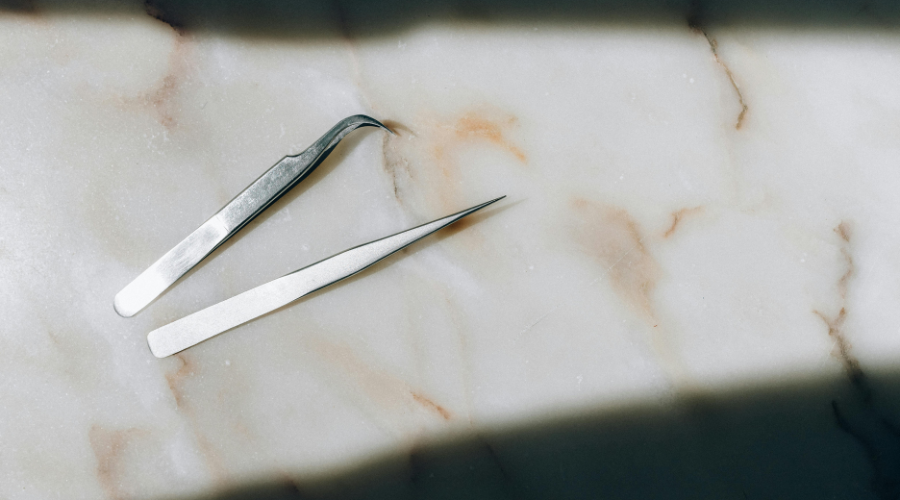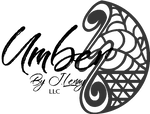Beyond Aesthetics: Understanding the Science of Ingrown Hairs

So you just shaved or waxed and now see those pesky red bumps popping up all over. We've all been there. Ingrown hairs can be annoying and make you want to hide your legs. But why do they happen in the first place? What's going on under your skin when hairs get trapped and curl back into your pores?
In this article, we'll explore the science behind ingrown hairs. You'll learn what causes them, how they form, and tips to prevent them from occurring. We'll also discuss potential complications and when you may need to see a dermatologist. So read on to finally understand the enemy and how you can fight back against ingrown hairs!
What Exactly Are Ingrown Hairs?
Put simply, ingrown hairs occur when the hair shaft curls back and grows into the skin. Ingrown hairs typically appear as raised, red bumps that can be painful or itchy. When a hair follicle produces a hair, it normally grows outward in a straight or slightly curved path. But sometimes, due to factors like dead skin cell buildup, hair removal methods like shaving or waxing, or hair that is naturally more coarse, the hair can get trapped underneath the skin and grow sideways into the skin, causing inflammation and irritation.
The Causes and Risk Factors for Ingrown Hairs
Ingrown hairs happen when your hair curls back into the skin instead of growing out naturally. Anyone can get ingrown hairs, but some factors increase your risk.
Hair Type and Texture
Coarse, curly hair is more prone to becoming ingrown. The hair's natural curl causes it to bend back and re-enter the skin. Tightly curled hair in particular, like that found in many African Americans, is especially susceptible. The hair's texture and wave pattern make it difficult for hair shafts to pass through the skin.
Shaving and Hair Removal
Shaving, waxing, and other hair removal methods prompt new hair growth, increasing the chance of ingrown hairs. As hair starts to regrow, it can get trapped under the skin. An improper shaving technique, like shaving against the grain or using a dull razor, enhances the problem. Waxing removes hair from the roots but also increases the risk of ingrown hairs when new hair begins to emerge.
Dead Skin Buildup
Excess dead skin cells can block hair shafts and cause ingrown hairs. Not exfoliating regularly allows dead skin to accumulate, preventing hair from breaking through. Exfoliation removes this dead layer and unclogs hair follicles.
Skin Type
Oily or sensitive skin is more prone to ingrown hairs. The excess oil and moisture provide an ideal environment for hair to get trapped under the skin. Sensitive skin also tends to be more easily irritated by hair removal methods and regrowth.
By understanding what puts you at risk, you can take steps to prevent ingrown hairs. Focus on proper hair removal technique, exfoliation, moisturizing, and embracing your natural hair growth. Your skin will thank you, and you'll avoid the annoyance of ingrown hairs.
The Impact of Ingrown Hairs Beyond Appearance
Ingrown hairs can cause more than just skin irritation and unsightly bumps. Left untreated, ingrown hairs may lead to infection or scarring.
Infection
When a hair curls back into the skin, it can allow bacteria to enter the hair follicle and surrounding tissue. This may result in a condition known as folliculitis, which is an infection of the hair follicles. Signs of infection include increasing pain, redness, swelling, or pus around the ingrown hair. Minor infections can often be treated with warm compresses, but see your doctor if symptoms worsen or don't improve. Oral antibiotics may be needed for more serious infections.
Scarring
Repeated or severe ingrown hairs in the same area can cause scarring over time. As ingrown hairs heal, the skin produces collagen to repair damage from the inflammation. This collagen buildup results in raised or indented scars where the ingrown hairs were located. Scarring is more likely if you frequently pick, scratch or dig at your ingrown hairs instead of properly extracting them. See a dermatologist for prescription creams or procedures to minimize scarring from ingrown hairs.
While ingrown hairs are typically not dangerous, they can negatively impact your self-confidence and daily activities if left unaddressed. By understanding the potential impacts beyond appearance and properly treating ingrown hairs when they occur, you can avoid complications and feel more at ease with your skin. Speak to your doctor about medical interventions for chronic or severe ingrown hairs that don't respond to home treatments.

Treating and Preventing Ingrown Hairs
Exfoliate the Area
Exfoliation removes dead skin cells from the surface of your skin, helping free trapped hairs before they become ingrown. Gently exfoliate the area where you tend to get ingrown hairs 2-3 times a week. You can use a scrub, chemical exfoliant like glycolic acid, or facial brush like a Clarisonic. Be very gentle, especially if you already have existing ingrown hairs. Scrubbing too hard can further irritate the hair follicle and surrounding skin.
Use a Warm Compress
If you already have an ingrown hair, apply a warm compress to the area for 10-15 minutes, 3-4 times a day. The heat will help soften the skin and open the pores, making it easier for the trapped hair to break through. You can make a simple warm compress by soaking a washcloth in warm water and applying it to the affected area.
See a Dermatologist for Prescription Creams
For persistent or inflamed ingrown hairs, a dermatologist may prescribe topical creams containing retinoids, alpha hydroxy acids, or steroids to reduce inflammation, exfoliate the skin, and speed healing. These prescription creams can be very effective, especially when combined with other treatments.
Medical Procedures
For severe or recurring ingrown hairs, procedures like laser hair removal, photodynamic therapy, and dermabrasion can reduce hair regrowth and improve skin texture to help prevent future ingrown hairs from forming. These medical procedures provide more permanent solutions but also tend to be more expensive. Discuss the options with your dermatologist to determine what treatment plan is right based on the severity of your condition.
By following these tips, you can get existing ingrown hairs under control and help prevent new ones from forming. Be patient and consistent, and you'll get smoother, bump-free skin in no time. But don't hesitate to see a dermatologist if your ingrown hairs are particularly painful, inflamed or showing signs of infection. They have the proper tools and training to give you relief and help avoid scarring.

Ingrown Hair Removal Methods and Products
Tweezing
The simplest method is using tweezers to pull the hair out from the root. Sterilize the tweezers with alcohol and grab the hair as close to the root as possible. Pull in the direction of hair growth using a quick, firm motion. Tweezing provides a temporary solution but can be painful and irritating if done frequently.
Exfoliation
Exfoliating the area with an abrasive scrub, chemical exfoliant like glycolic acid, or facial brush helps loosen dead skin cells and unclog hair follicles. This can help release ingrown hairs and allow them to grow out properly. Exfoliate 1-2 times a week, especially after shaving or waxing. Look for exfoliants containing salicylic acid or alpha hydroxy acid (AHA) to penetrate pores and soften skin.
Laser hair removal
For a more permanent solution, laser hair removal uses targeted light pulses to destroy hair follicles, preventing regrowth. It typically requires multiple treatments but provides long-lasting hair loss and reduces ingrown hairs. Laser hair removal does come at a higher cost, but eliminates the need for daily shaving and irritation from ingrown hairs.
Prescription creams
For severe or inflamed ingrown hairs, a dermatologist may prescribe a medicated cream containing retinoids (to increase cell turnover), steroids (to reduce inflammation), or antibiotics (if infection is present). Creams can help unclog hair follicles and reduce irritation while other removal methods are used. Use as directed to avoid skin irritation.
In the end, the most effective approach for eliminating ingrown hairs is often a combination of professional removal methods supplemented with a regular at-home regimen of exfoliation, moisturization and tweezing. Don’t continue to suffer the pain and unsightly bumps—you have options to free those trapped hairs and get your skin back to smooth. Consistency and patience are key.




